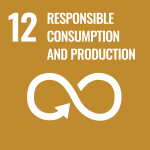Recycling the unrecyclable
The transition to a circular economy seeks to replace today’s linear “take-make-dispose” approach to resources. This implies a more resource efficient approach, where resources are “kept in the loop” for as long as possible by recycling or reusing them. This presents a challenge for many manufacturing industries, including the packaging industry. While it may be easy to recycle cardboard or paper, recycling packaging made up of mixed materials is a more difficult – but not impossible – task.
One of the innovative solutions developed by the chemical industry to help recycle multi-layer packaging is the use of particular polymers or processes that make recycling easier. For example, a technology developed by DuPont makes it possible to recycle used agrochemical bottles, a typically difficult product to recycle.
This technology can dramatically decrease the amount of used bottles going to landfill, by giving a second life to the multi-layer materials which constitute them.
The technology has already been widely deployed in Brazil where 150,000 tons of used agrochemical bottles have been recycled – equivalent to 374,000 barrels of crude oil or over 160,000 tons of CO2 equivalent emissions.
Associated SDG targets

Interesting reads